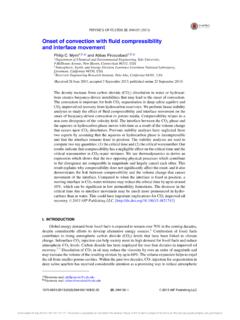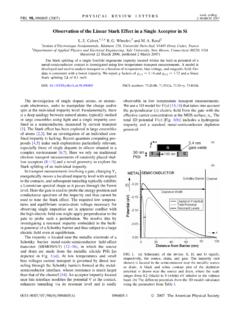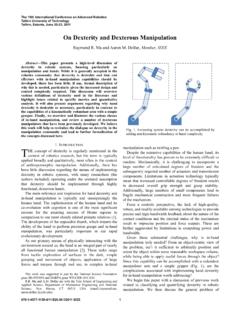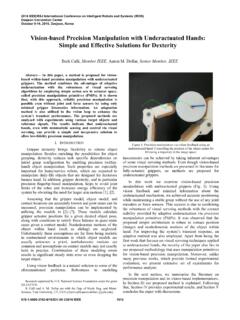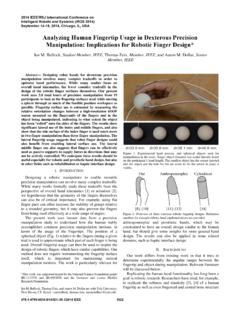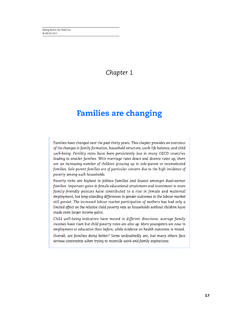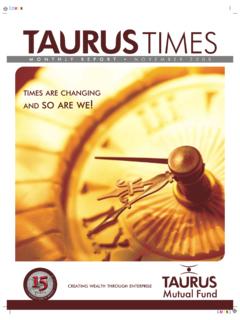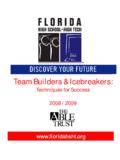Transcription of IEEE TRANSACTIONS ON HAPTICS, VOL. 10, NO. 1, …
1 Design and Evaluation of Shape-ChangingHaptic Interfaces for Pedestrian NavigationAssistanceAdam J. Spiers,Member, IEEEand Aaron M. Dollar,Senior Member, IEEEA bstract Shape- changing interfaces are a category of device capable of altering their form in order to facilitate communication ofinformation. In this work, we present a shape- changing device that has been designed for navigation assistance. The Animotus (previously, The Haptic Sandwich ), resembles a cube with an articulated upper half that is able to rotate and extend (translate) relativeto the bottom half, which is fixed in the user s grasp. This rotation and extension, generally felt via the user s fingers, is used torepresent heading and proximity to navigational targets.
2 The device is intended to provide an alternative to screen or audio basedinterfaces for visually impaired, hearing impaired, deafblind, and sighted pedestrians. The motivation and design of the haptic device ispresented, followed by the results of a navigation experiment that aimed to determine the role of each device DOF, in terms offacilitating guidance. An additional device, The Haptic Taco , which modulated its volume in response to target proximity (negatingdirectional feedback), was also compared. Results indicate that while the heading (rotational) DOF benefited motion efficiency, theproximity (translational) DOF benefited velocity.
3 Combination of the two DOF improved overall performance. The volumetric Tacoperformed comparably to the Animotus extension Terms Haptics technology, assistive technology, human factors and ergonomics, system design and analysis 1 INTRODUCTIONSMARTPHONES with GPS capabilities have made outdoorpedestrian navigation guidance commonplace. Recentcommercial developments in Bluetooth and WiFi basedlocalization further aim to bring such technology intoindoor spaces, such as shopping malls and hospitals ( , , ). The primary userinterface for such systems has been screen based, with maps,routes, arrows and distance information guiding sightedpedestrians to destinations.
4 This choice of modality has beendescribed as surprising by Hemmert et al. [1], who considerwalking to be an activity that requires visual attention to theenvironment. Supporting this argument is an increasingnumber of pedestrian accidents and injuries related tomobile phone use [2]. Pedestrians exhibit reduced situationalawareness and distraction from potential hazards when talk-ing or texting ( , reading and typing) on cellular phones[2], [3], [4], [5]. The same effects have been noted as a cause ofroad traffic accidents by drivers using cell phones [6], [7], [8],[9]. When multiple tasks rely on the same attentionalresource, performance typically declines [10].
5 An alternative interface for navigation systems is viaaudio cues, which are offered on many platforms such asautomobile GPS systems ( , TomTom ),smartphone applications ( ,Google )and several research prototypes [11], [12], [13],[14]. For many visually impaired (VI) pedestrians, screens areinaccessible, making audio a natural interface choice formobile navigation apps. Unfortunately, the requirement touse headphones in typically noisy urban spaces can obscureor distract from sounds of the environment [12]. Such ambi-ent sounds may be used for orientation, landmark recogni-tion ( , a sidewalk cafe or noisy traffic intersection), danger(an approaching vehicle) or simply social interaction throughconversation and the appreciation of one s surroundings[13], [15], [16].
6 Social exclusion and clashes with cultural val-ues have been indicated as factors in the abandonment ofassistive technology [17], [18] and may eclipse the benefits ofusability and function [19]. For deafblind individuals, bothvisual and audio interfaces are interfaces may provide a more appropriate stimu-lus to sighted, VI, and hearing impaired (HI) individuals,by targeting the sense of touch, which has a less critical roleduring walking than other senses. Indeed, the most popularand long-standing VI mobility aids are the guide cane andguide dog, which both provide feedback by mechanotactilehaptic cues delivered to the user s hand via the cane shandle or dog s harness.
7 The appeal and benefit of hapticnavigation interfaces beyond VI persons is apparent in con-sumer interest in the Taptic interface of the recent Applewatch [20]. The binary Taptic Engine provides simple nav-igation instructions by tapping on the wearer s prototype VI devices have utilized vibrotactile feed-back to represent spatial/guidance data [13], [15], [21], [22],[23], [24], [25], [26], [27], [28], [29], [30], [31], [32]. In ourwork we consider the potential of a shape- changing inter-face,The Animotus(Fig. 1), as a method of providing The authors are with the GRAB Lab, Department of Mechanical Engineer-ing and Materials Science, Yale University, New Haven, CT : { , received 28 Oct.}
8 2015; revised 9 June 2016; accepted 15 June of publication 20 June 2016; date of current version 16 Mar. information on obtaining reprints of this article, please send e-mail and reference the Digital Object Identifier Object Identifier no. TRANSACTIONS ON HAPTICS, VOL. 10, NO. 1, JANUARY-MARCH 2017171939-1412 2016 IEEE. Personal use is permitted, but republication/redistribution requires IEEE for more pedestrian navigation guidance. We believe thatsuch an interface sidesteps the attention-grabbing natureof vibrotactile feedback for better integration into realisticuse scenarios, while also exhibiting the convenience andsubtlety of a cell phone-like handheld Animotus has the somewhat unusual objective ofproviding navigation assistance to sighted, VI and HI indi-viduals.
9 Similar to the Apple Watch [20], VI persons maynavigate with the Animotus solely via haptic feedback,while sighted / HI people do notneedto look at the deviceto use it, enabling them to be more visually attentive of theirsurroundings. As with smartphone navigation applications,a user also does notneedto be constantly attentive of thedevice, and may choose to refer to it at their own frequency,placing the device it in a pocket / bag when not needed orsimply lowering their arm, as with a is a little explored modality, with fewexamples that facilitate haptic feedback (reviews are pro-vided in [33], [34], [35], [36]). Notable contributions fromHemmert et al.
10 [1], [37], [38] and Imamura et al. [39] imple-ment dynamic tapering and curving of handheld interfacesto provide navigation instructions. Regrettably, validationof these systems has been extremely limited, with userseither remaining stationary in simulated tests [1], [37], [38],or no testing results being reported at all [39]. Shape- changing Device MotivationShape- changing interfaces have a number of potentiallyattractive features. One aspect is the naturalistic nature of themodality, which may be better suited to representing partic-ular data and tasks [40]. Perception of shape is an innate hap-tic ability that humans perform with little effort [41], [42].
